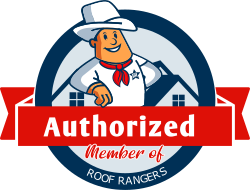The Ultimate Gutter Cleaning Checklist for Texas Homeowners
Texas ‘unpredictable weather and seasonal debris can wear down your home’s gutter system. Whether you reside in the Hill Country, along the Gulf Coast or in the sprawling Dallas-Fort Worth, your gutters safeguard your property. This guide is written for Texas homeowners to help you avoid common gutter problems.
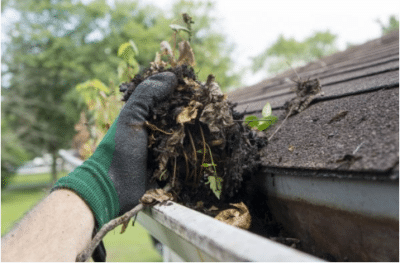
Why Gutter Maintenance is Important in Texas.
Gutter maintenance is more than a seasonal chore – it’s a part of home maintenance in the Lone Star State. From heavy spring rains to windblown fall leaves, your gutters must cope with a variety of environmental stressors. Routine care can save you money on structural damage and extend the life of your gutter system.
If you do not properly clean your gutters, water will pool around your foundation, cause siding rot and even interior leaks. A well-maintained system keeps water flowing and protects your roof and landscape. This section explains the long-term benefits of preventive maintenance and the risks of ignoring your gutters.
Top 5 Gutter Issues in Texas (and How to Fix Them)
1. Drooping or Sagging gutters
Sagging gutters can be caused by accumulated debris or failing hangers. Over time, that extra weight can pull your gutters away from the fascia.
Clear out any buildup and inspect the fasteners to fix it. You may need to replace old brackets with stronger, rust-resistant hardware to restore support.
Prevent sagging by regularly cleaning and checking for wear after major storms or windy days throughout Texas.
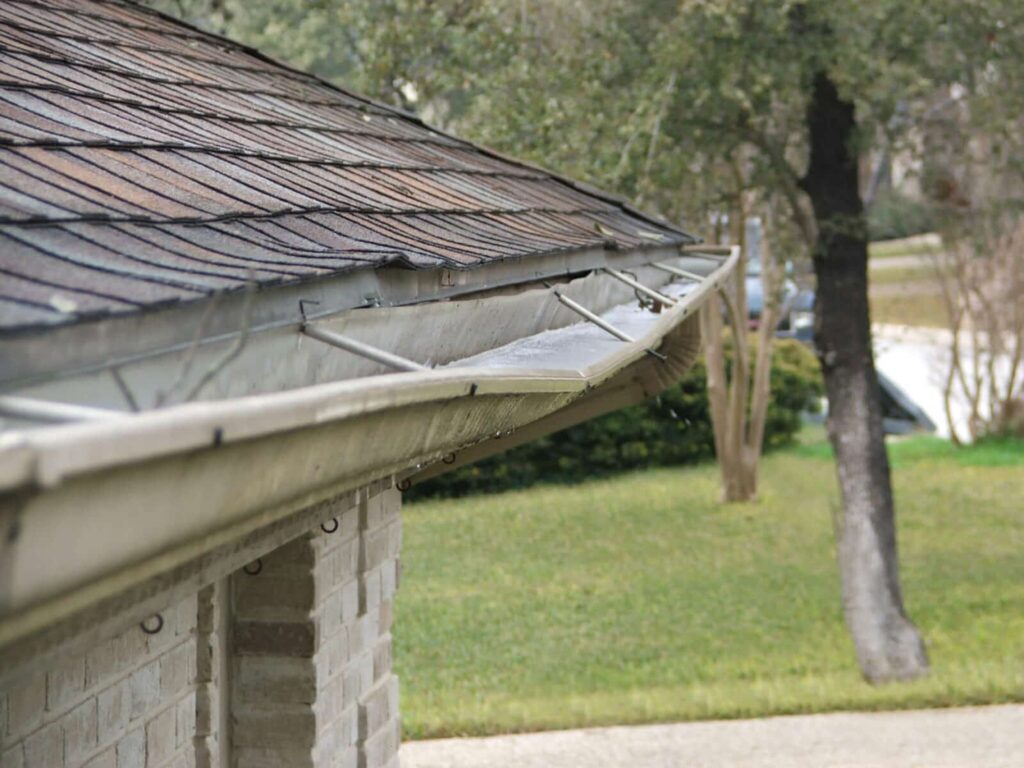
2. Gutter Leaks
Leaky gutters can cause water damage around your roofline and foundation. Leaks often occur because of cracked seams or corroded spots.
Repair small leaks with waterproof sealant or replace short sections if damage is severe. Secure joints and make sure they are watertight.
Check your gutters after extreme heat or sudden cold snaps, which can cause materials to expand, contract, and crack.
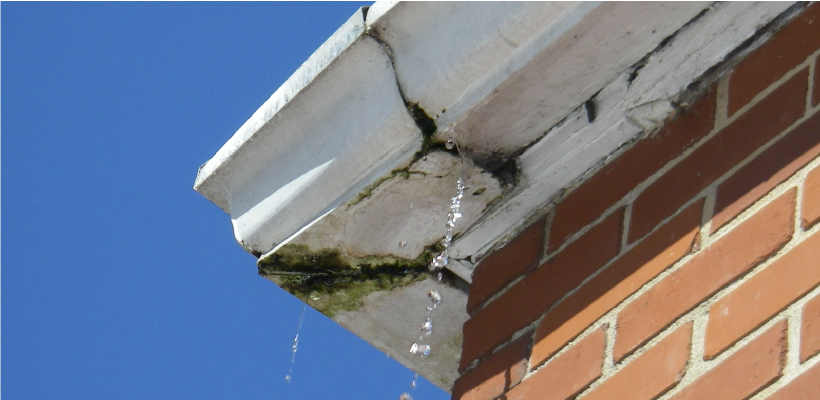
3. Improper Slope or Pitch
If your gutters aren’t sloped properly, water will pool instead of draining to the downspouts. This can lead to overflow and erosion around your home.
Check the pitch with a level – gutters should drop about a quarter inch every 10 feet. Adjust brackets or rehang sections to get proper flow.
This is especially important in flat Texas landscapes where slow-draining water can create problems very quickly.

4. Blocked or Clogged gutters
Leaves, acorns and even nesting pests can block your Gutters, especially in tree-rich Texas areas like East Texas or Austin.
Remove debris with a scoop or gloved hand and flush with a hose.
Consider adding mesh screens or gutter guards where there is heavy foliage to reduce the need for cleaning.
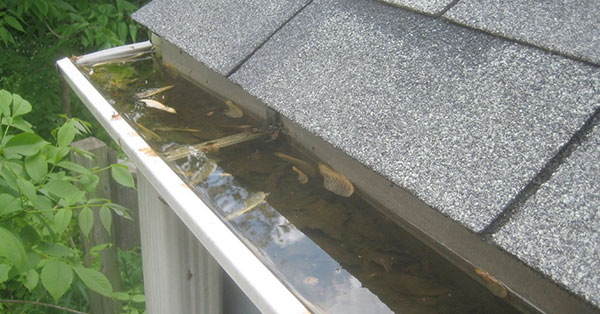
5. Rusted or Corroded gutters
Metal gutters that have been exposed to high humidity or salt air near the coast may rust prematurely.
Use a wire brush and rust-inhibiting primer to treat minor rust. Highly corroded sections may need to be completely replaced.
For homes in coastal or humid Texas climates, aluminum and vinyl alternatives may provide better long-term performance.

The Ultimate Texas Gutter Cleaning Checklist
1. Gather the tools and Equipment
Before you go start, gather the tools: gloves, ladder, bucket, trowel, garden hose and safety gear.
The right equipment makes the job easier and reduces risk – especially if you’re cleaning high or hard-to-reach gutters.
Some two-story homes and uneven terrain may also require extension ladders with stabilizers for Texas homeowners.
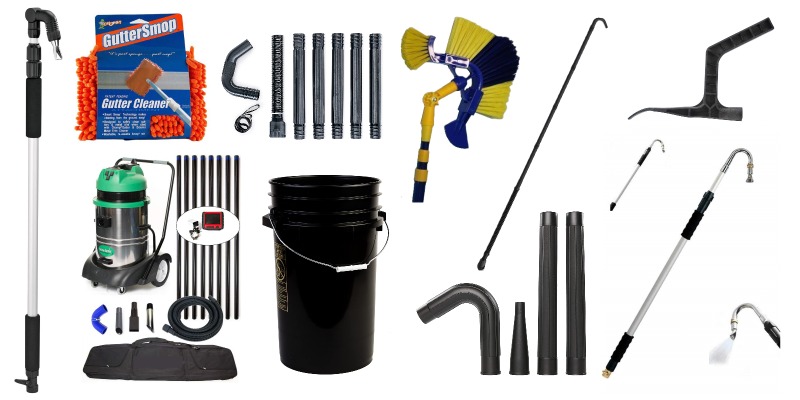
2. Conduct a Thorough Gutter Inspection
Look for signs of damage including cracks, sagging sections, or separated seams.
Check gutter joints and where the system connects to downspouts.
A flashlight can illuminate darker areas if you work in the morning or late at night.
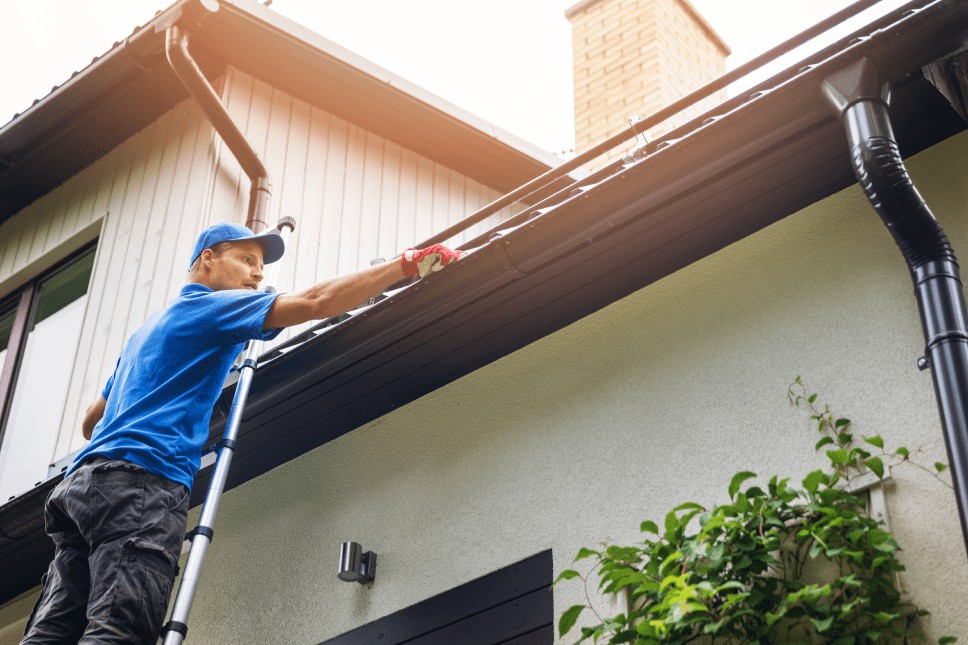
3. Clear Out All Debris
Use a scoop or your hands to scoop twigs, leaves, and sediment Out.
Start at the downspouts and work your way to the corners, flushing with a hose.
Be extra vigilant during spring pollen season or after summer storms that bring heavy debris to Texas.
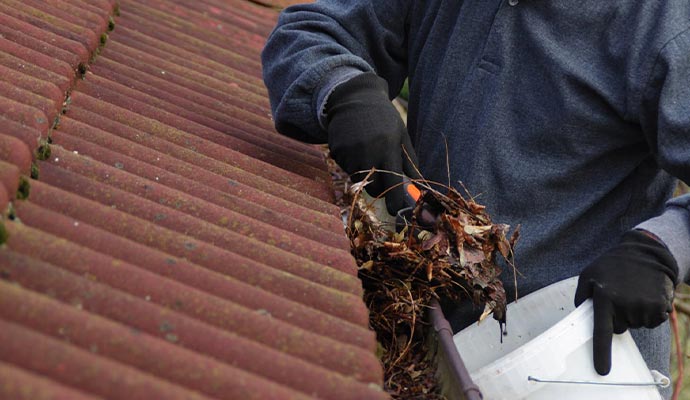
4. Inspect and Unblock the Downspouts
Downspouts can get clogged just as easily as gutters, which can cause overflow and foundation problems.
Disconnect each downspout and flush each downspout with a high-pressure hose or plumbing snake if necessary.
Make sure water leaves at least 3 feet from your home – install extenders if runoff pools near the foundation.

5. Consider Installing Gutter Guards
Guards can cut down on the debris that enters your gutters, reducing time and effort over the long haul.
Choose materials that suit your environment – mesh screens work well in leafy areas, and foam inserts may work well in drier climates.
And in a state where oak and pine trees are common, guards could mean fewer cleanings per year.
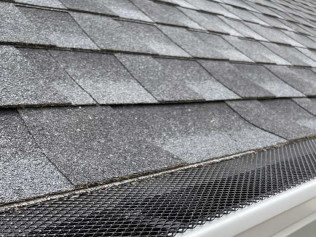
6. Schedule Regular Maintenance Year-Round
Don’t wait until there’s a problem. Reminders to clean and inspect your gutters at least twice a year – prime times are spring and fall.
Frequent inspections can catch minor problems before they become major repairs.
Adjust your schedule to local weather, such as cleaning after a major hailstorm or a long dry spell followed by rain.
7. Always Put Safety First
Use a ladder, wear non-slip shoes, and never lean too far to one side. Use a spotter or ladder stabilizer.
For high roofs, wear a safety harness or call for help to avoid unnecessary risk.
Remember, gutter cleaning injuries are common and can be prevented with proper precautions.
8. Know When to Call a Pro
Some jobs, especially ones with high or complex roofs, should be left to the pros.
Professional services have the tools, experience and insurance to handle the toughest gutter cleanings.
In Texas, where roofs may have steep slopes or metal surfaces, expert help ensures safety and efficiency.
DIY vs. Professional Gutter Cleaning: Which Is the Better Option?
☐ The Case For DIY
Gutter cleaning for handy homeowners, Cleaning your gutters can be a fun and budget-friendly project. It lets you check the condition of your gutters yourself, and many single story homes can be serviced with a little elbow grease and basic tools and safety equipment.
For homes with accessible roofs and simple layouts, DIY is often best. In case you feel at ease on a ladder and also have the time to carry out the job properly, this could save you money while providing you with control of the process.
But DIY is not without risk. Falls, improper cleaning or missed damage can cost more in the long haul if you don’t have the right equipment or experience.
☐ Benefits of Using a Professional
gutter cleaning Service experience, efficiency, and safety are key when it comes to Gutter Cleaning. They know what to look for – from small rust spots to hidden clogs in downspouts. Most pros also offer inspections and minor repairs as part of their service.
If your home is two stories or has a steep, complex roof (which is common in many Texas neighborhoods), hiring a pro eliminates the risk of ladder falls or missed problem areas.
License contractors are also insured and bonded, which protects you if something breaks on the job.
☐ Making the Right Choice for your home
When deciding between DIY and professional service, consider Your Home’s height, Your personal comfort with heights and tools and Your time commitment.
If you put off maintenance, or your last cleaning revealed structural problems, hiring a professional could save you money down the road.
In a state where fast weather changes can turn a minor gutter problem into a major one, many homeowners choose to do some DIY between seasonal professional cleanings.
Eco-Friendly Gutter Debris Disposal Tips.
✔ Why Eco-Friendly Disposal Matters
When you clean your gutters, you’ll find quite a bit of organic material – leaves, dirt, twigs and perhaps bird or insect nests – removed. It may be easiest to toss it in the trash, but dumping it environmentally reduces landfill waste and helps your garden.
Texas homeowners who live in suburban or rural areas can really use some composting, since yard waste breaks down into soil.
Plus, proper disposal helps prevent clogged storm drains that cause local flooding after heavy Texas rains.
✔ Composting Gutter Waste
Most material you pull out of your gutters – leaves, twigs, pine needles – is recyclable and makes great compost.
Add this material to your compost bin or pile in addition to grass clippings or household wastes to create a balanced carbon-to-nitrogen ratio.
Avoid composting any trash, plastic or roofing materials found in the gutter, and use gloves when handling debris to avoid bacteria or sharp objects.
✔ Municipal yard waste Services and Recycling Options
Many Texas cities offer Yard Waste pick-up or drop-off sites where you can dispose of organic matter safely.
For information on accepted materials, bagging requirements and drop-off locations, contact your local waste management provider.
If you live in a rural area without curbside compost services, start a backyard compost bin or contact local farms and nurseries that accept organic debris.
Tips to Keep Your Gutter System Running Longer.
✔ Clean and Inspect Regularly
The best way to extend The life of your gutters is with regular maintenance. Clear debris at least twice a year and look for wear, corrosion, or sagging.
Catching problems early can stop small problems from becoming full gutter replacements.
In Texas, a spring and fall routine works well with additional checks after major weather events such as hailstorms or hurricanes.
✔ Use gutter guards and Quality Materials
Buying Gutter Guards helps prevent clogs and debris from entering the home. This relieves the weight stress on your gutter system and prevents corrosion.
When replacing parts of your gutter, choose rust-resistant materials such as aluminum or vinyl, especially in Texas with high-humidity areas.
Reinforce joints and brackets with stainless steel hardware for extra protection in high winds or heavy rain.
✔ Make minor Repairs Promptly
A small leak or loose bracket may not sound urgent, but ignoring these minor problems can cause major water damage.
Apply sealant, re-secure brackets, and replace worn sections before they compromise your entire system.
Prepare a gutter repair kit or call a professional to help before problems get worse.
How to Clean Gutters on a Two-Story or Steep Roof.
- Understanding the Risks
Two-story homes with steep rooflines are common in Texas suburbs and custom homes. But these heights pose serious safety risks.
Improper ladder use, unsteady footing, or a strong wind can cause falls.
That is why additional caution, planning and the proper equipment are crucial before you go.
- Use the Right Tools and Safety Equipment
Purchase an extension ladder with stabilizer arms and a ladder standoff to keep the base from clogging gutters.
Wear non-slip footwear, a tool belt to keep your hands free and a roof harness if you work on a steep pitch.
If you are unsure you can handle the height or tools, hire a professional.
- Consider Alternative Methods or Hire Help
Telescoping gutter cleaning tools or wet/dry vacuums with gutter attachments can be used to clean from the ground.
These tools may not offer as deep a clean as manual debris removal, but can reduce risk during in-between cleanings.
If in doubt or your roof has significant incline or height, call in an experienced technician.
How to Find a Gutter Cleaning Service in Texas.
- What to Look for in a Reliable Contractor
Look for licensed, insured companies with excellent customer reviews.
Ask if they give an upfront estimate and if they include inspections or minor repairs with the service.
Experience with Texas-specific conditions such as red clay runoff, hail damage or Gulf humidity is an asset.
- Questions to Ask Before Hiring
Ask how long they’ve been running a business, what kinds of homes they concentrate on and if they guarantee their work.
Ask for references and make sure their workers are covered by liability and workers’ compensation insurance.
An excellent contractor will be happy to answer questions and provide evidence of qualifications.
- Red Flags to Avoid
companies that offer vague pricing, no physical address, or that press you to commit without a written quote.
Avoid those that lack basic safety protocols or who lack insurance – you’re a liability.
Verify trustworthiness through their online presence, Better Business Bureau rating and local reviews.
Last Thoughts: Protecting Your Home, One Gutter at a Time.
Gutter care is more than a chore – it’s an investment in your home’s safety and value. With the right checklist, tools and habits, Texas homeowners can stay ahead of the curve.
Whether you like to do it yourself or you need to call a professional like Liberty gutter LLC, you need to keep your gutters in good condition in the Texas climate.
Use this guide as your guide for smart, safe, and effective gutter maintenance all year.
Frequently Asked Questions (FAQs).
How often should I clean my gutters in Texas?
At least twice a year – spring and fall. But where there is heavy tree coverage or frequent storms, it may be necessary to clean up every quarter.
Will clogged gutters ruin my home?
Definitely. Blocked gutters can cause water overflow, foundation damage, roof rot, and mold inside your walls.
Are gutter guards worth the price?
Yes, for most homes. They reduce maintenance and help prevent clogs – especially in tree-heavy areas of Texas.
When do I need new gutters?
Persistent leaks, rust spots, sagging sections, or separation from the fascia are warning signs your gutters need to be replaced.
Do professional services offer warranties?
Most reputable companies do. Ask if they guarantee their work and provide follow-up if there are issues.








